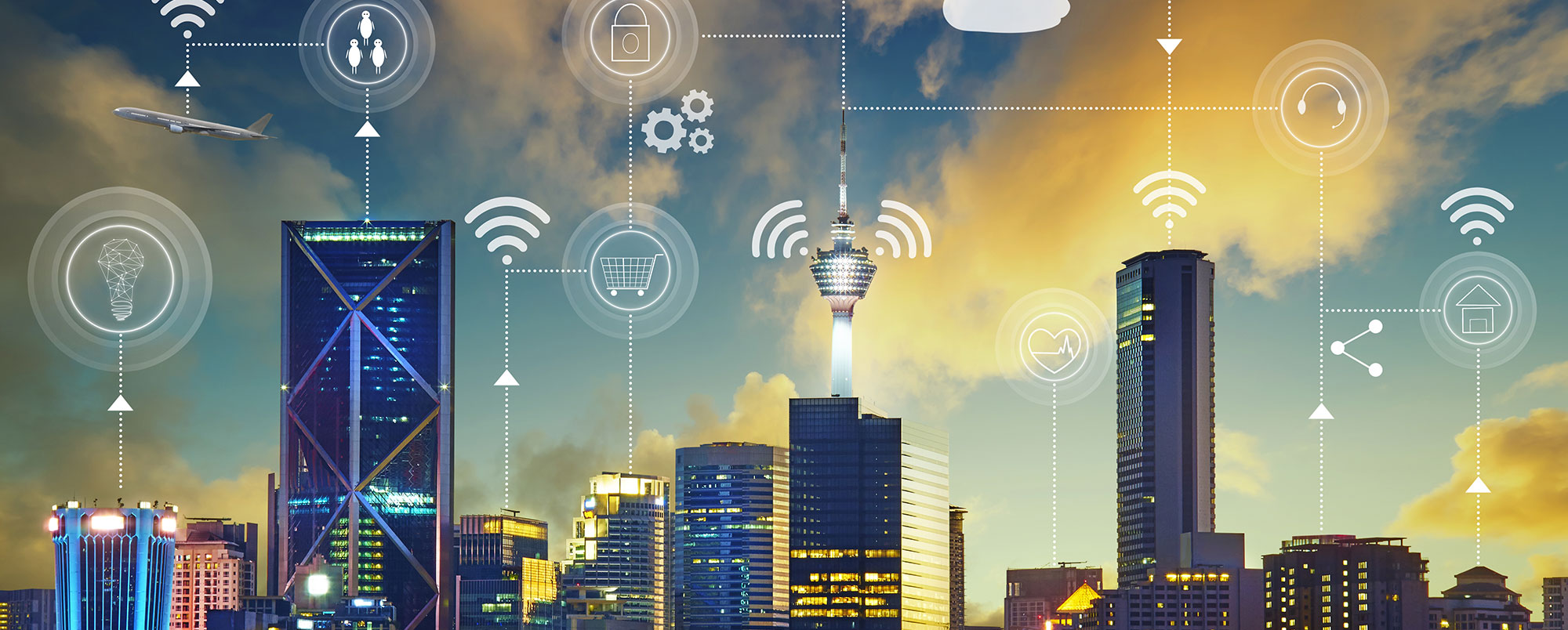Data centres will become indispensable in the future. The plan of action should be to start right now to make them energy-efficient and also use their heat to offset electricity bills.
Millions of data centres around the world use an astronomical 416 terawatt-hours of electricity each year to manage the 2.5 quintillion bytes of data created every day by individual and business users, as per international reports. In fact, a large data centre uses as much electricity as a small city in the US. It is estimated that by 2025, data centres will account for one-fifth of the global electricity consumption. Alarming new research suggests that failure to source renewable energy could make data centres one of the biggest polluters in just seven years.
As analysts estimate as many as 50 billion devices to be connected by 2020, with some statistics pointing to more than 100 billion a further five years down the line, new alarming research suggests that data centres will be one of the biggest energy consumers on the planet, beating many countrie’s energy consumption levels.
The virtual world is built on physical infrastructure. Every search query submitted, email sent, page served, comment posted, and video loaded passes through data centres that can be larger than a football field. A data centre allows for the movement, storage, and analysis of the information that sits at the heart of our personal and business lives.
Without data centres, we would not be able to engage as freely as we like in daily communications, share on social platforms, stream video, conduct commerce, or access and transfer money — as well as advance the work in game-changing areas that involve Artificial Intelligence (AI), machine learning, Internet of Things (IoT), security, 5G networks, and autonomous transportation.
Urban data centres have a large yet largely unexploited potential to contribute to local energy consumption optimisation in smart cities and smart grid optimised operations. Energy efficiency should be addressed in a holistic way, by considering the interaction of data centres with the relevant stakeholders within urban contexts (electricity distributors, district heating operators, energy suppliers, smart city/district energy managers).
Data centres may become collaborative stakeholders within the framework of upper-level smart city ecosystems. Reinforcing this vision, innovative business models are being proposed that enable the next generation of smart net-zero-energy data centres, acting as energy prosumers at the interface with smart energy grids within a smart city environment. It should focus on smart energy solutions for data centres and telecom centres to achieve green and sustainability goals, including being environmentally friendly, decreasing carbon emissions, increasing energy-efficiency, etc.
There are three main areas of business cases: The data centre energy supply and demand, grid services to utilities, and energy supply services. With data-based business cases, while the expected energy data will be structured, mostly numerical and therefore manageable, several actors foresee long-term business cases in coupling these data with Big Data— the data people generate around them on a daily basis.
Data centres will be major beneficiaries of the emergence of smart cities, which will require lots of connectivity, data storage and compute power for analytics to crunch all that data. Putting facilities on an electron diet, smart energy management stands at the centre of the solution to improving always-on data systems. Machine learning gives computers the ability to learn things without being explicitly programmed, by teaching themselves through repetition how to interpret large amounts of data and thus help in energy saving in data centres.
In a cloud-computing environment, companies or individuals offload their computing (hardware, software or data) to the cloud, which is supported by the computing infrastructure called datacentres. Datacentres consume large amounts of electricity to operate and bring enormous electricity bills to the operators. Associated emissions also have a significant negative impact on the environment.
Meanwhile, the emerging smartgrid technology’s innovative approaches to renewable energy will help improve datacentre sustainability for smaller data centres. Smaller data centre providers should follow in the footsteps of the large hyper-scalers in adopting renewable energy sources to power the data centres rather than relying solely on unsustainable fossil fuel energies.
Nevertheless, e-waste is created when data centres dispose of their server, storage, and networking equipment. An estimated 20-50 million metric tons of e-waste are disposed of globally every year, with heavy metals and other hazardous waste ending up in landfills.
The survey respondents said of the recycling practices employed in their data centres that many had multiple ways to dispose of e-waste, including partnering with a recycling company, repurposing hardware at their business, or reselling the hardware. Reasons given for not recycling spanned from the process being too time-consuming or costly, followed by difficulty in finding a proper partner, and lack of proper planning for e-waste management.
Information Technology (IT) leaders increasingly regard Total Cost of Ownership (TCO) as a measure of operational efficiency for their data centres. However, 50% of the data centre managers do not know their Power Usage Effectiveness (PUE). On top of that, 12% do not recycle their outdated systems, which add to the increase in e-waste when 47% of data centres are refreshing their systems every one to three years.
The engineers should start by designing energy-efficient platforms with built-in power management features and suppliers should be encouraged to follow suit. Examples include high-efficiency power supplies and optimised thermal design, and can also include silicon changes, component changes, and energy-efficient motherboard design.
Several data centres have started selling the excess heat to district heating networks, so it can lower the electricity bill. It’s high time to learn from these global initiatives which are utilising the heat waste generated from data centres. The latest example comes from Telecity, which is using waste heat from its new Condorcet data centre in Paris, France, to heat an on-site Climate Change Arboretum, where scientists will recreate the climatic conditions expected to prevail in France in 2050.
The waste heat from a data centre in Finland underneath the Uspenski Cathedral — a popular tourist spot — will warm water pipes and will be channeled to nearby homes for heating. The planned data centre will be capable of providing enough heat to warm 500 large private houses.
A popular firm based in Stockholm signed a large-scale heat reuse agreement that is a world-first, where an already established data centre with an indirect air-to-air cooling solution will be retrofitted to recover excess heat for the local district heating system. The agreement is expected to correspond to the heating of up to 10,000 modern residential apartments.
A Nordic data centre supplier and Norway’s largest district heating supplier have also signed a letter of intent on the recovery of heat from a data centre at Ulven in Oslo, contributing to new district heating production corresponding to the energy needs of approximately 5,000 Oslo apartments.
But business models between the district heating network operator and data centre operator are often not transparent, which poses a threat for the adaption of such innovative usages. A recycling policy should also underpin the data centre hardware refreshing and replacement program. If the hardware is unable to be resold, it should be completely recycled so nothing ends up in a landfill.
Data centres are certainly a long way from becoming ‘green’. There are, however, strategies and technologies available that over time can go some way to improving carbon footprints. By implementing these and taking advantage of next-generation innovations, we can ensure that smart energy in the perspective of being lean and mean contributes towards a greener future.
Surya Dev Prakash is a Global Smart Cities Consultant and has experience with several verticals like public and private sector, clients in technology consulting for strategy planning, project management, etc. He has been apart of the team delivering the Smart Cities projects of Command & Control Centre (CCC)/ Common Cloud-based Command and Control Centre(5C) where data centres are one of the integral components.














